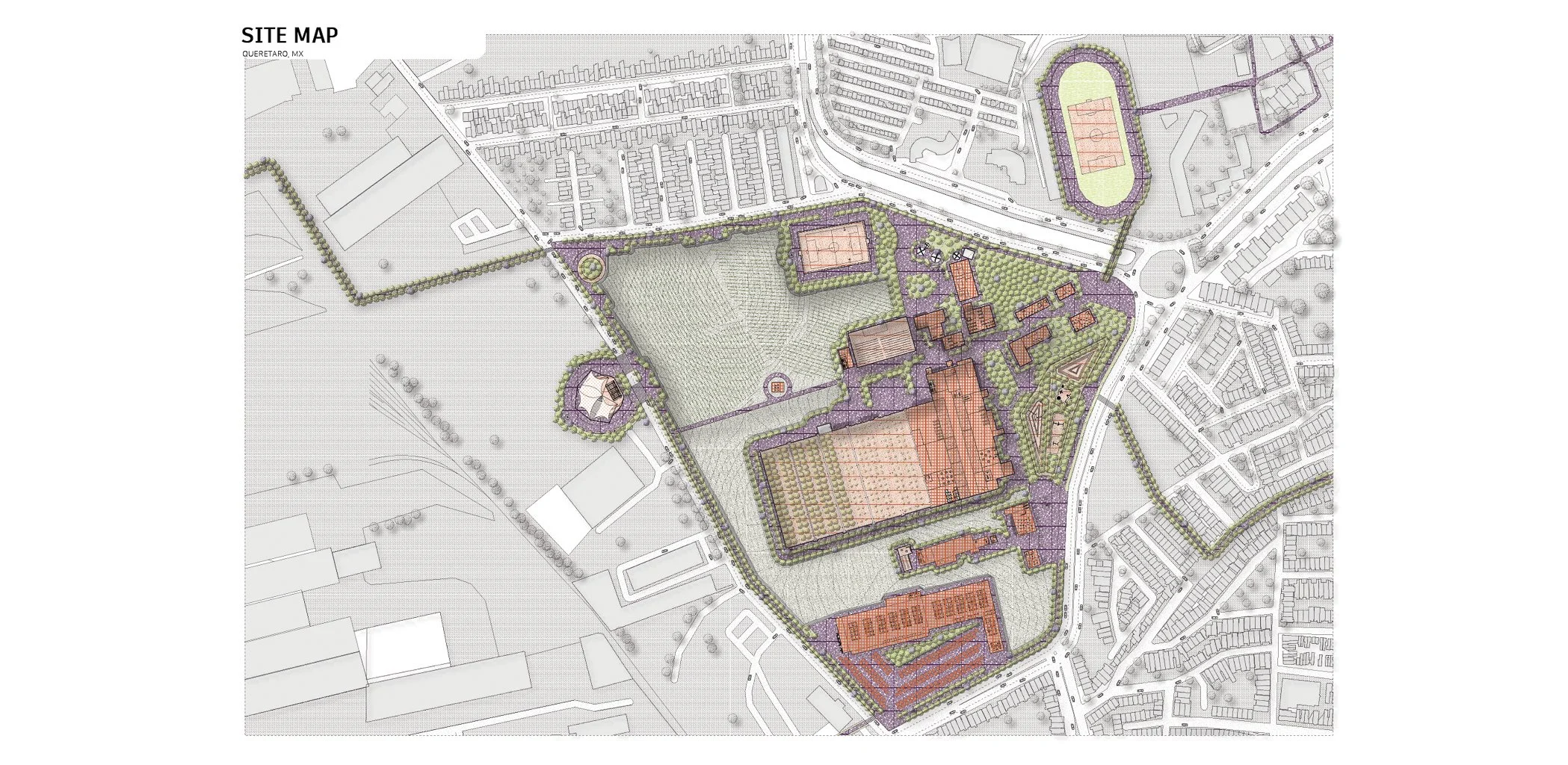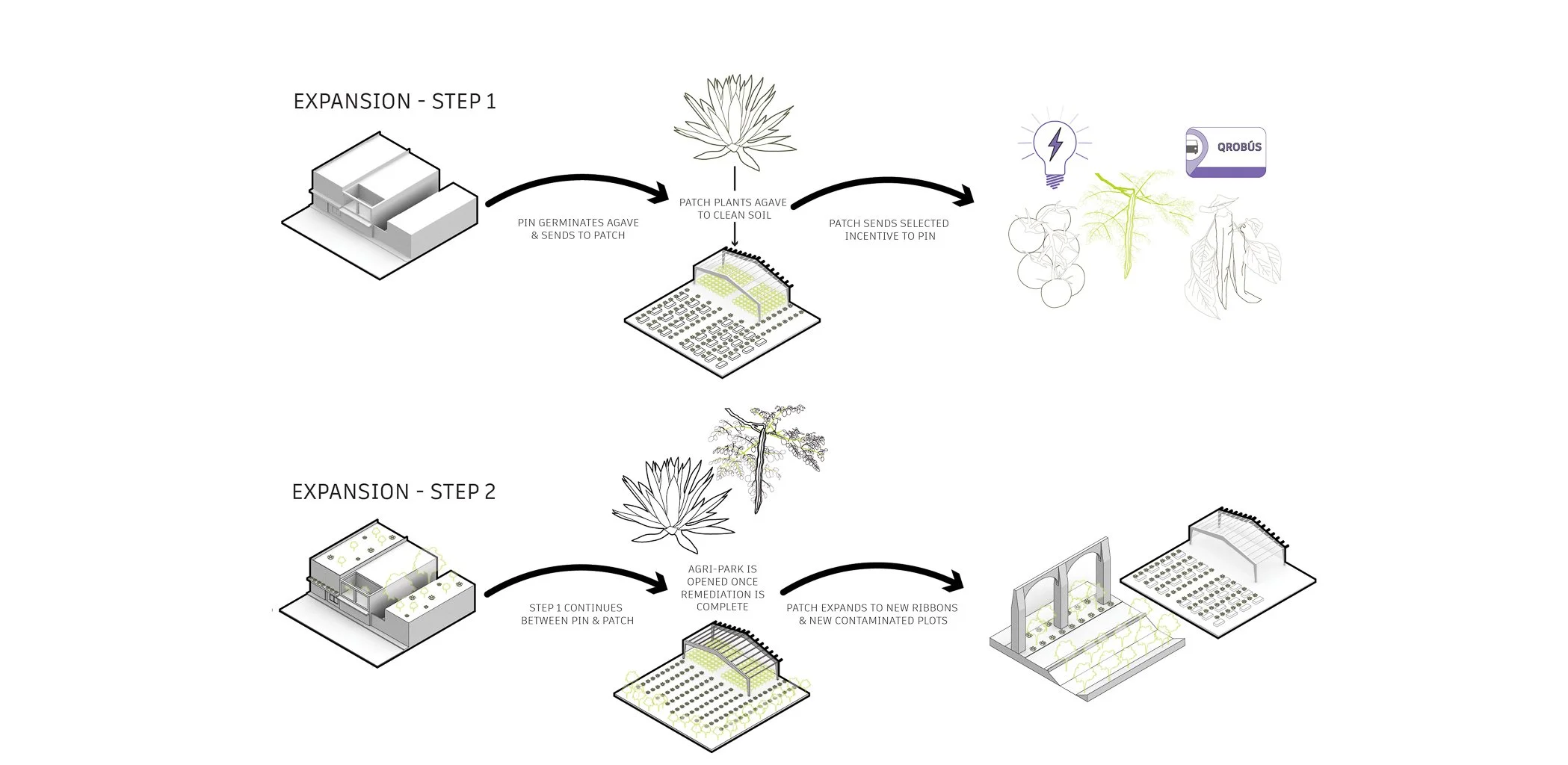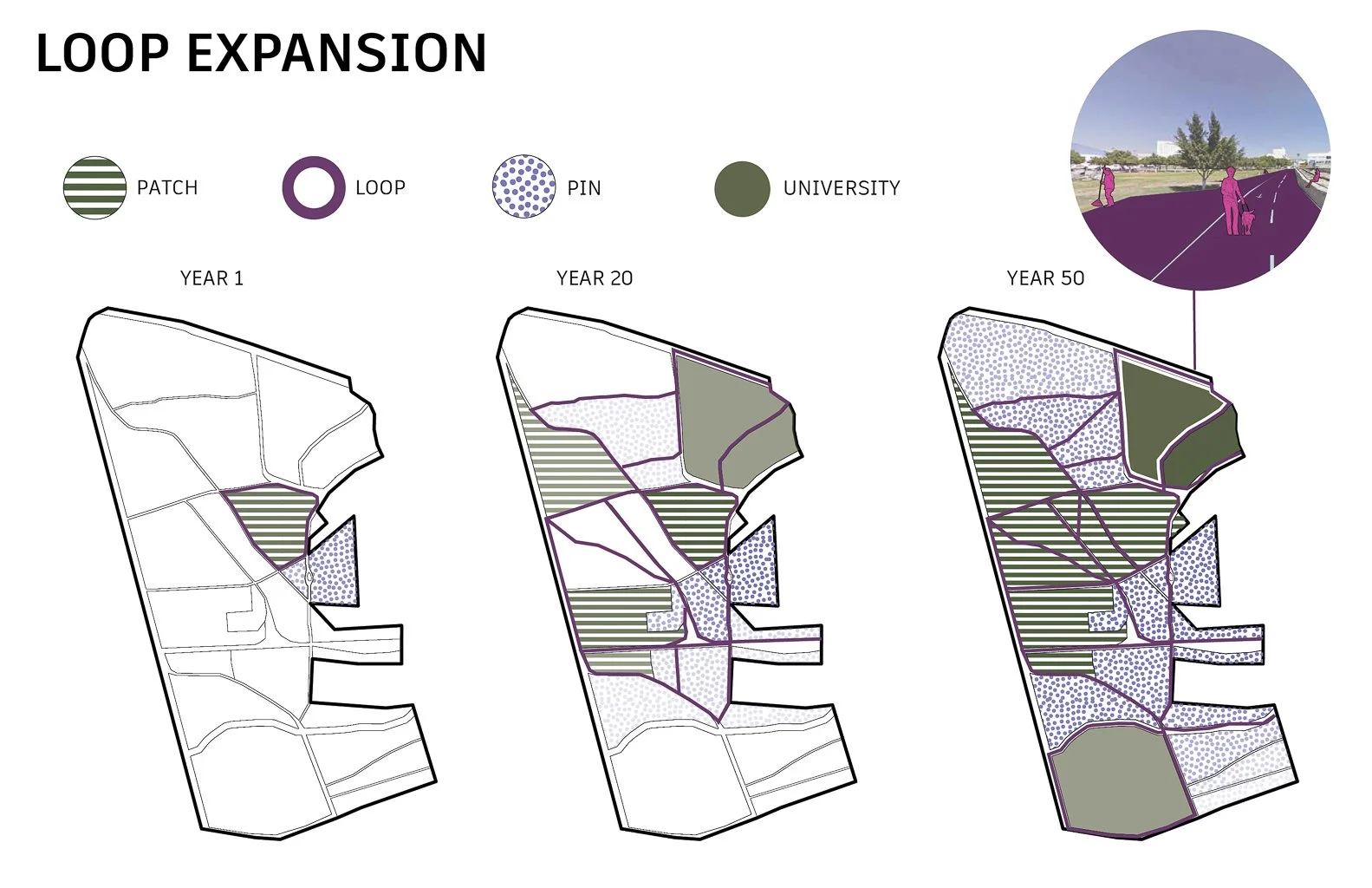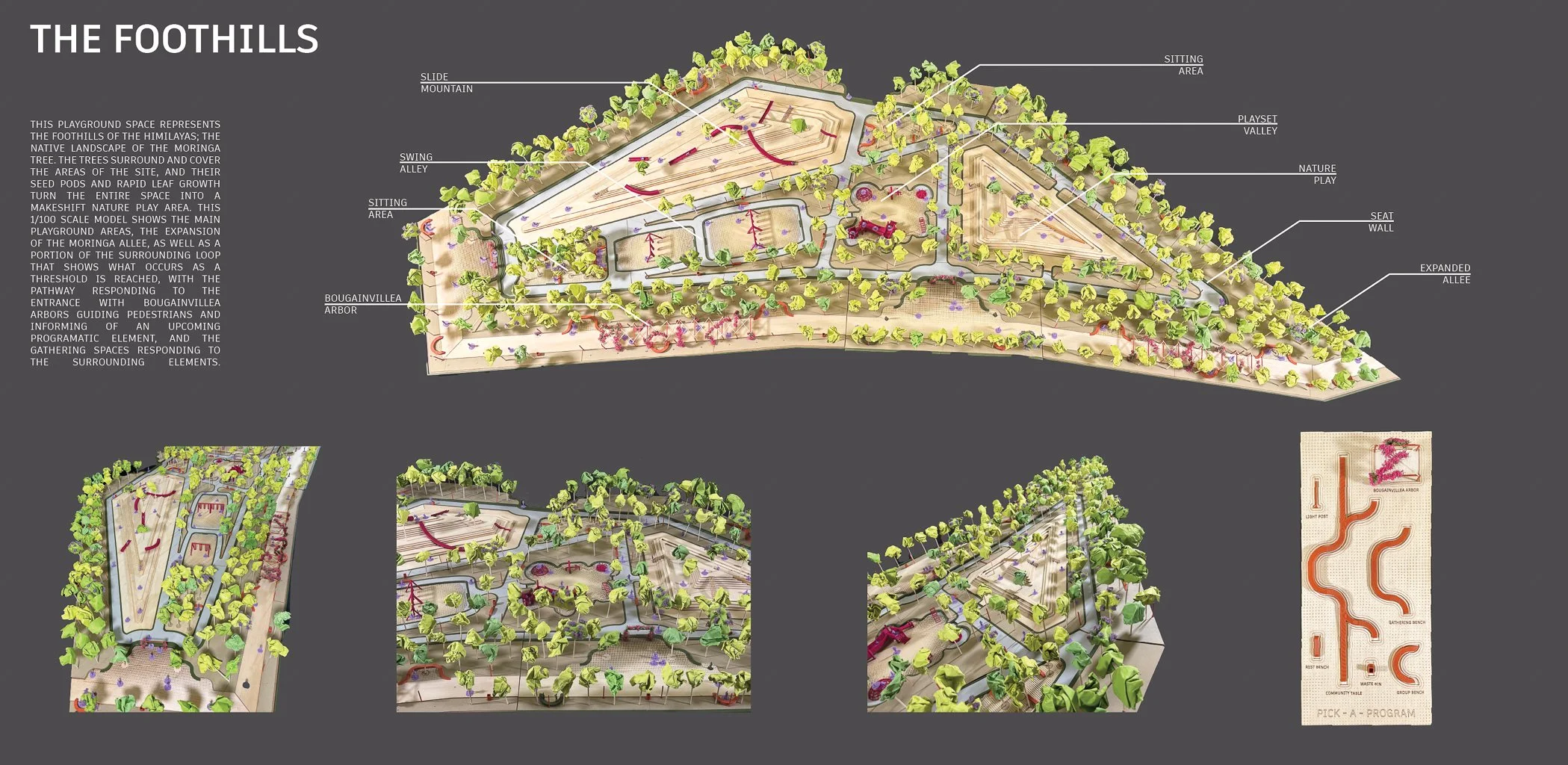Cat Marshall
Landscape Architecture Masters Project
The masters project consists of two parts, extending through two semesters: the 3-credit masters project preparation seminar and the 6- credit masters project studio. A masters project is different from a graduate studio in that it is a study that you formulate for yourself and undertake, largely, on your own. It is also the culminating project of your graduate tenure and is therefore representative of your development during your course of study. All masters projects must meet the following standards in order to be acceptable final products of the graduate program. It is an opportunity to study a topic, expand your understanding, and respond to it in new and creative ways.
Students of landscape architecture are expected to use their design vocabulary of drawings, diagrams, sketches, and maps exhaustively during the masters project process.
INDEX Studio
The studio focused attention to the interlocking challenges of climate change, and the potential to increase the cities capacities to cultivate green spaces with regenerative design and development. The projects design, fabricate, and speculate on green(er) alternative landscapes as design interventions that acts as a machine, registering and signaling change, restoring unsafe soils and cultivate creative explorations marginalized urban communities.
The InDEX studio examined contemporary issues of restorative landscape strategies that aims to explore how the physical, material and conceptual understanding of landscape can broaden current forms of landscape architectural and design practice and introduce new modes of landscape thinking into students' design vocabularies. The studio explored and examined contemporary issues of urban design, landscape cultivation, environmental restoration, and landscape ecology.
The studio investigated landscape machines as a precedent for landscape restoration beyond the visual appeal of the machine, the aesthetic, ecological and consumerist critique should be embedded in your studies. The studio collected digital data and translated it into a set of drawings and visualizations that use urban ecology and the social-ecological-systems framework as a lens through which to interpret the urban landscapes.
Students developed an operative design scheme that transforms the landscape over time through significant rhythms as well as engage the users through understanding of siting structures or machines create a healthy urban landscapes.
Morgan Mackey
Landscape Architecture Masters Project
Riverfront Stitch: Mending Cleveland's Industrial Valley
Through the principle of geographical re-enchantment, “Riverfront Stitch” releases the poetic potential of Cleveland Cliffs’ steel mill in the Industrial Valley, and explores how curated views can inform experiences of the valley’s working industry. The design presents how the remediation and reimagination of one parcel can open to the public a valuable moment of access to the Industrial Valley’s obscure yet rich landscape and history. Industrial remnants serve as interpretive follies, and hardy plantings transform contaminated private industry into vibrant and healthy public space. The design transforms past and forgotten stories into a memorable, engaging experience of Cleveland’s industrial heritage.
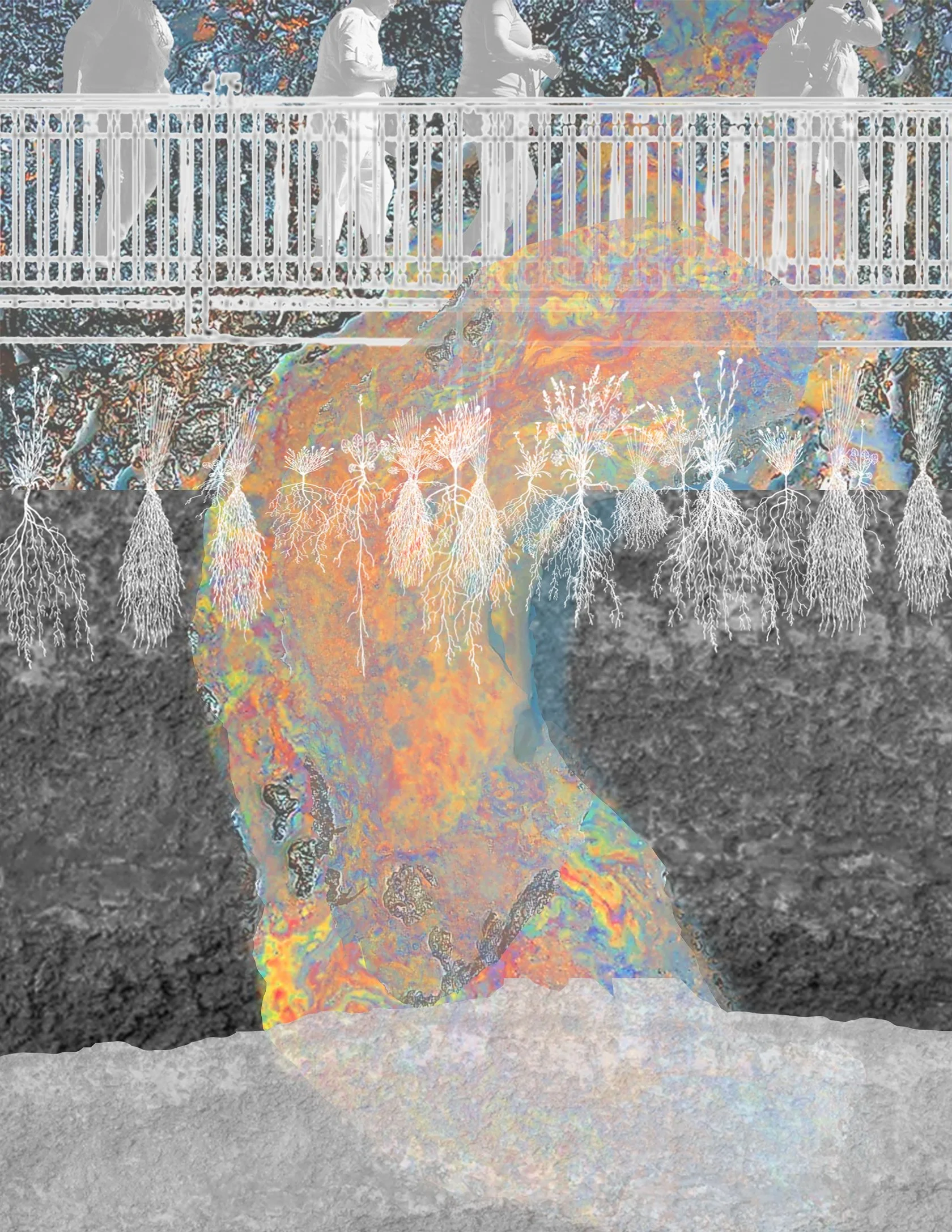
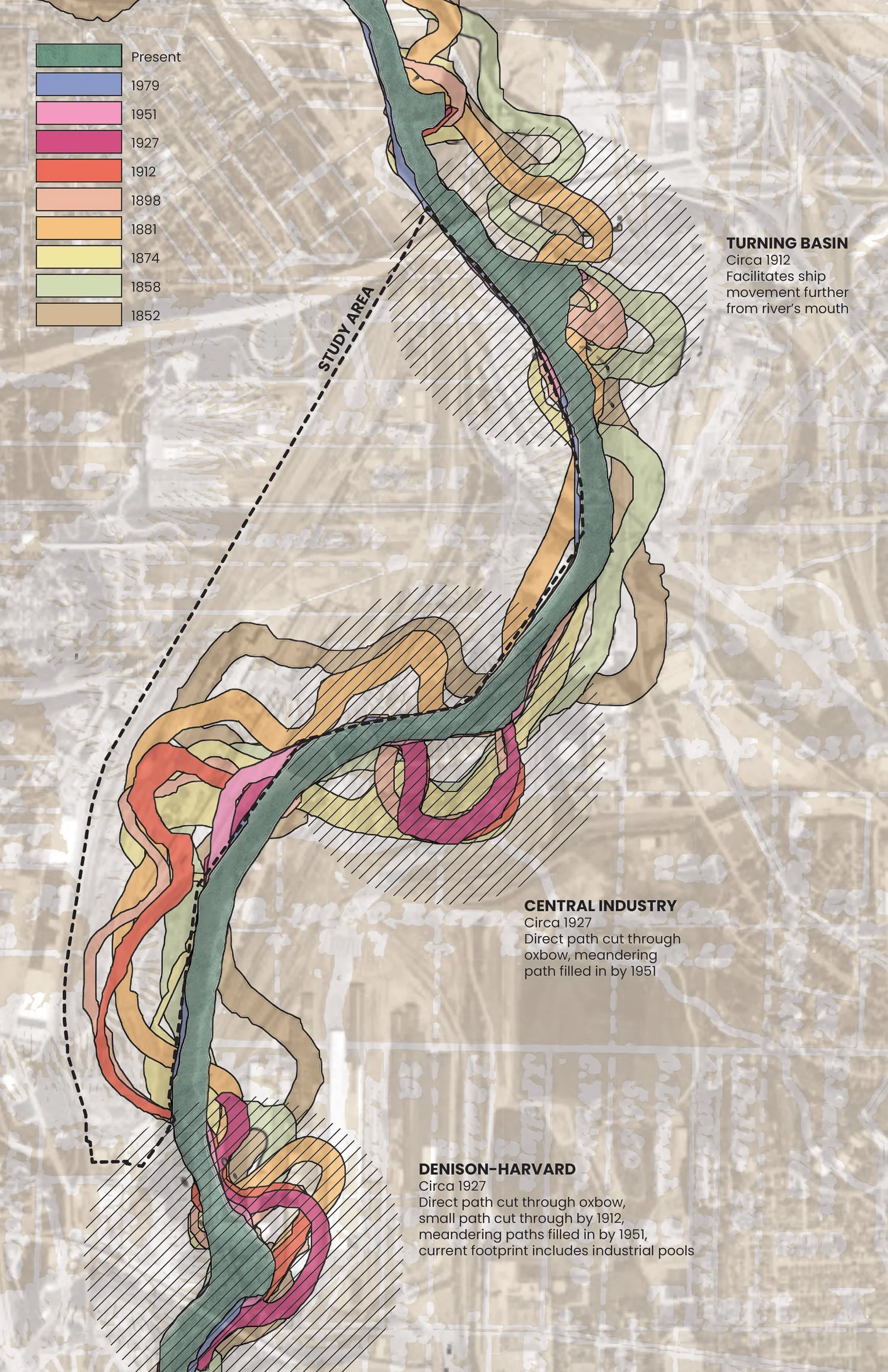
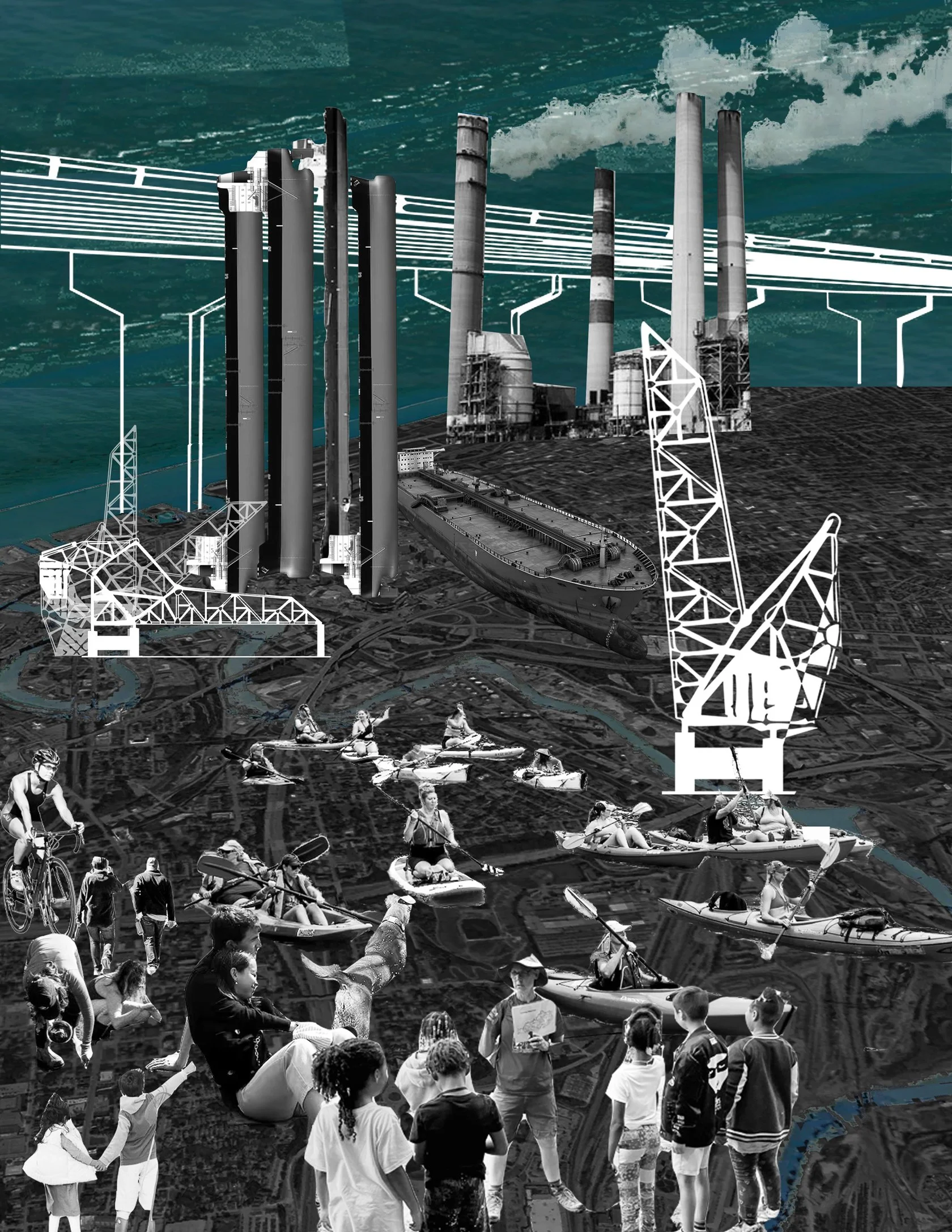
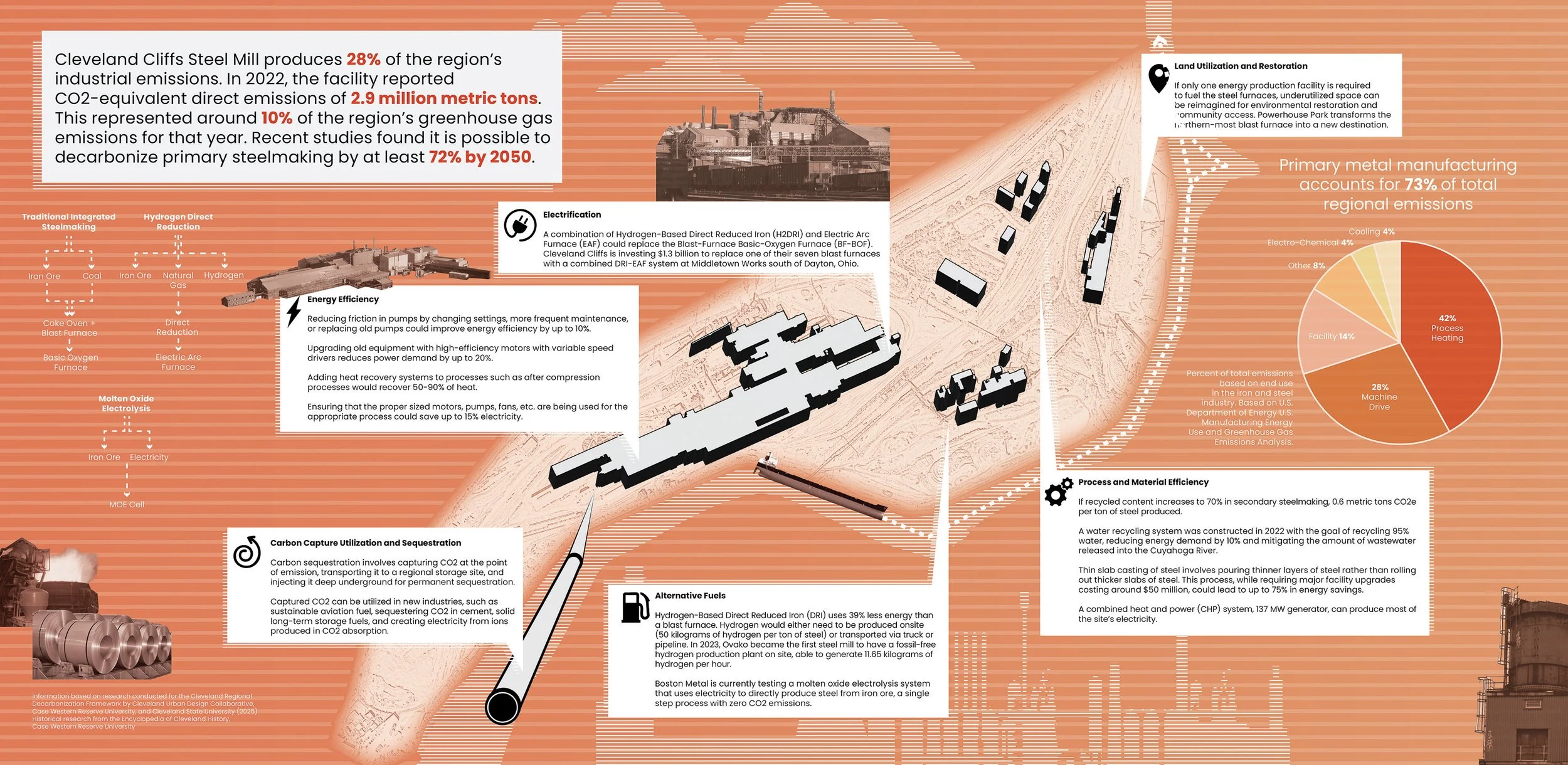
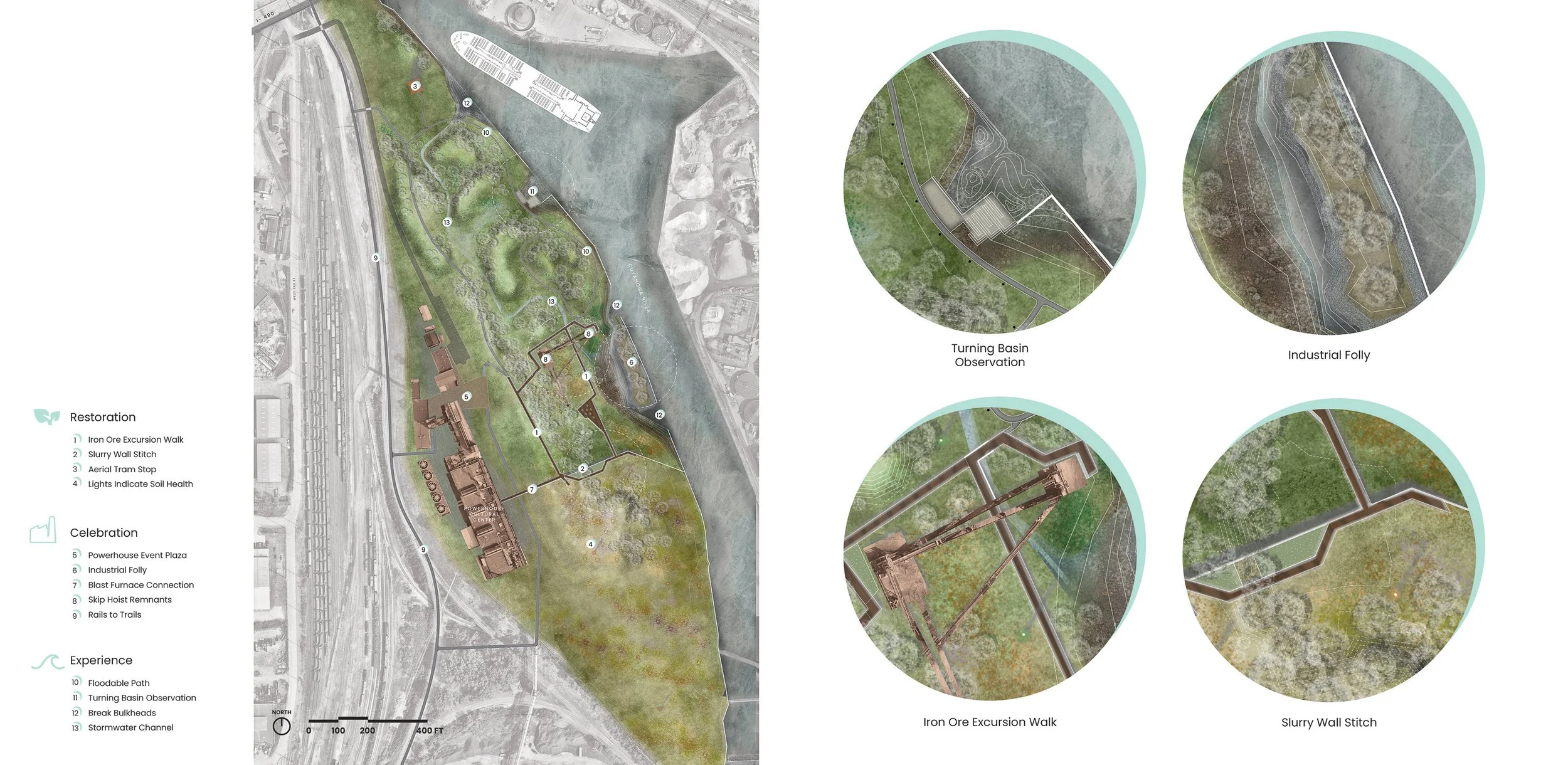
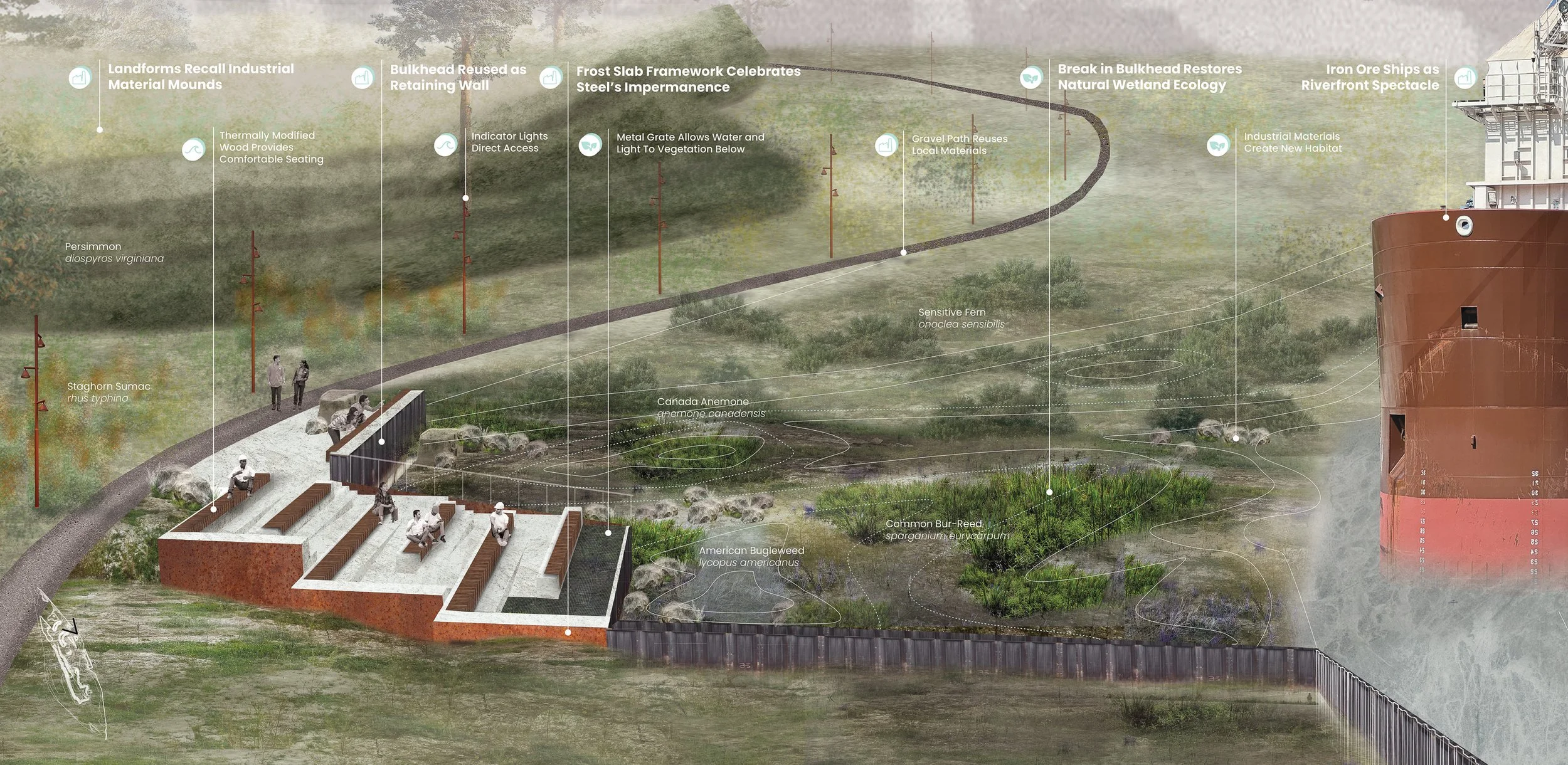
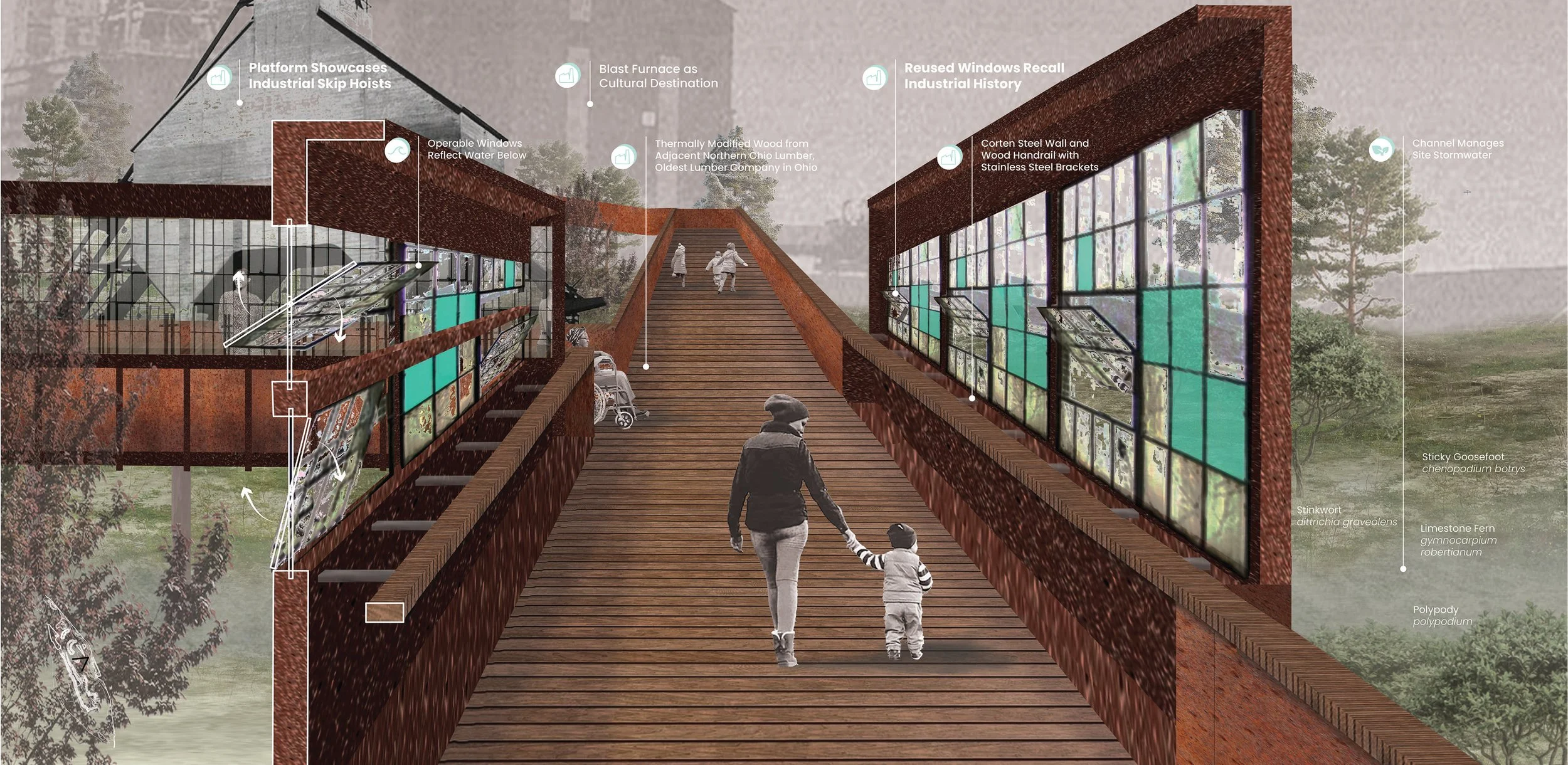
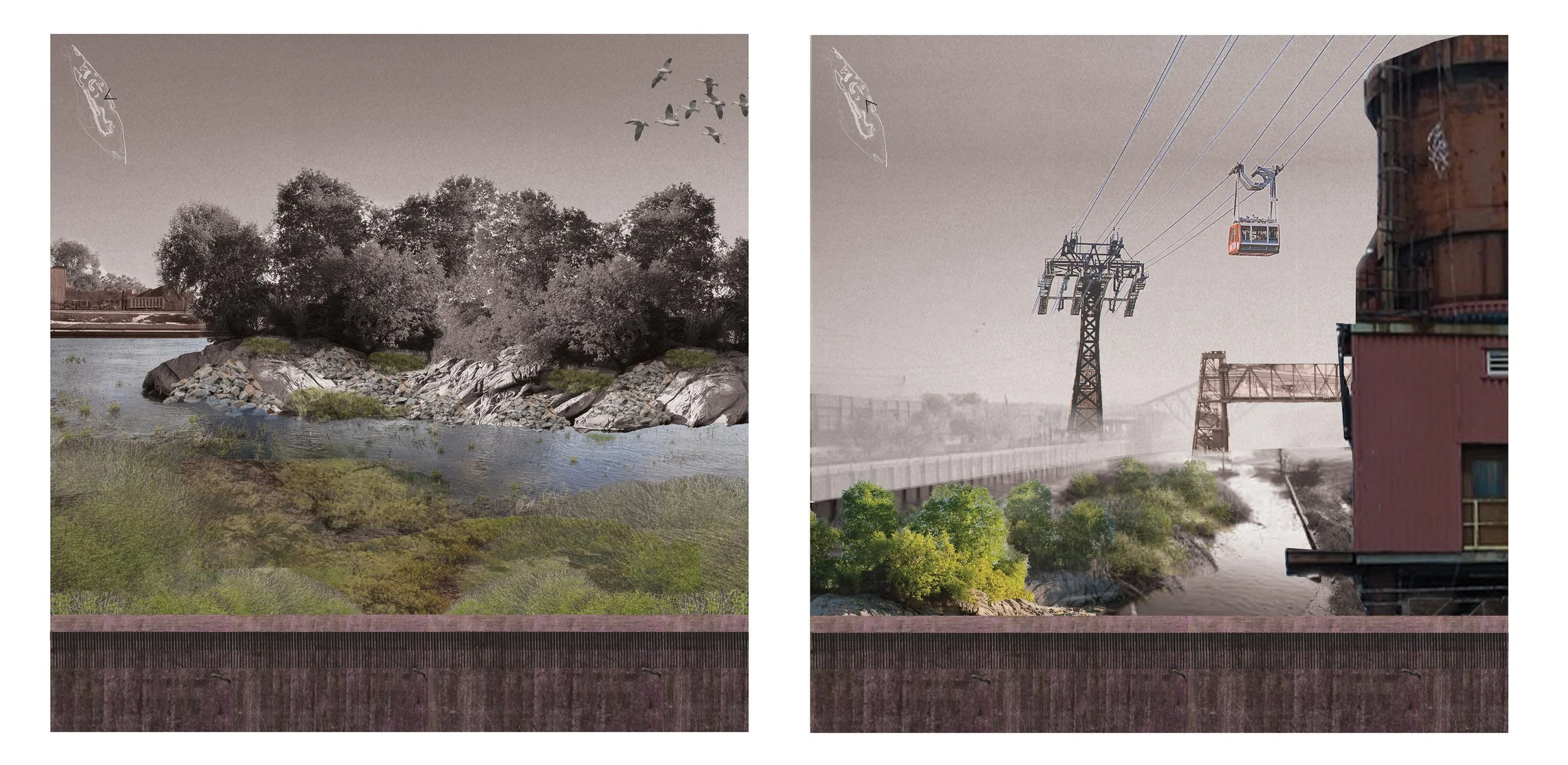
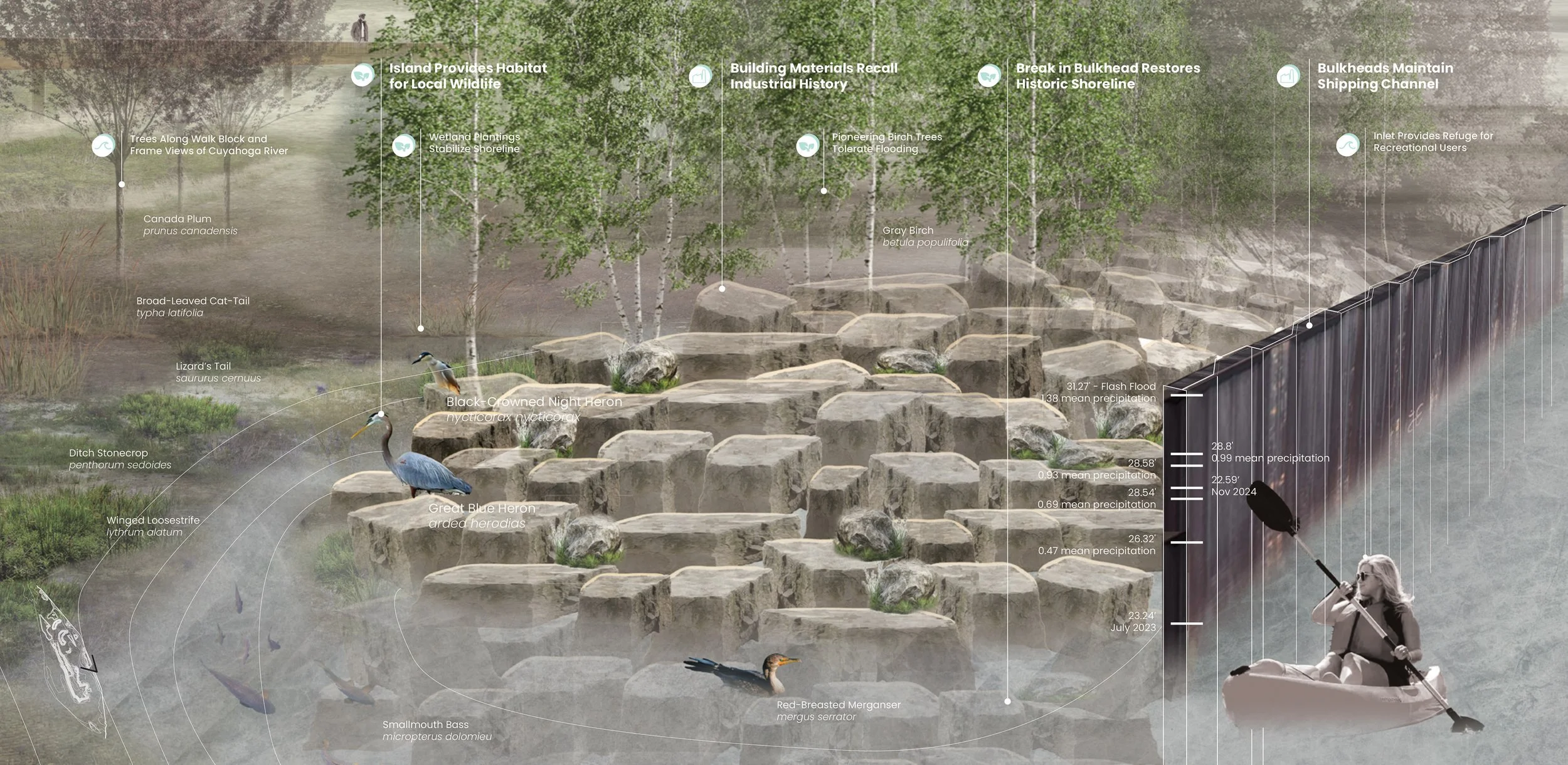
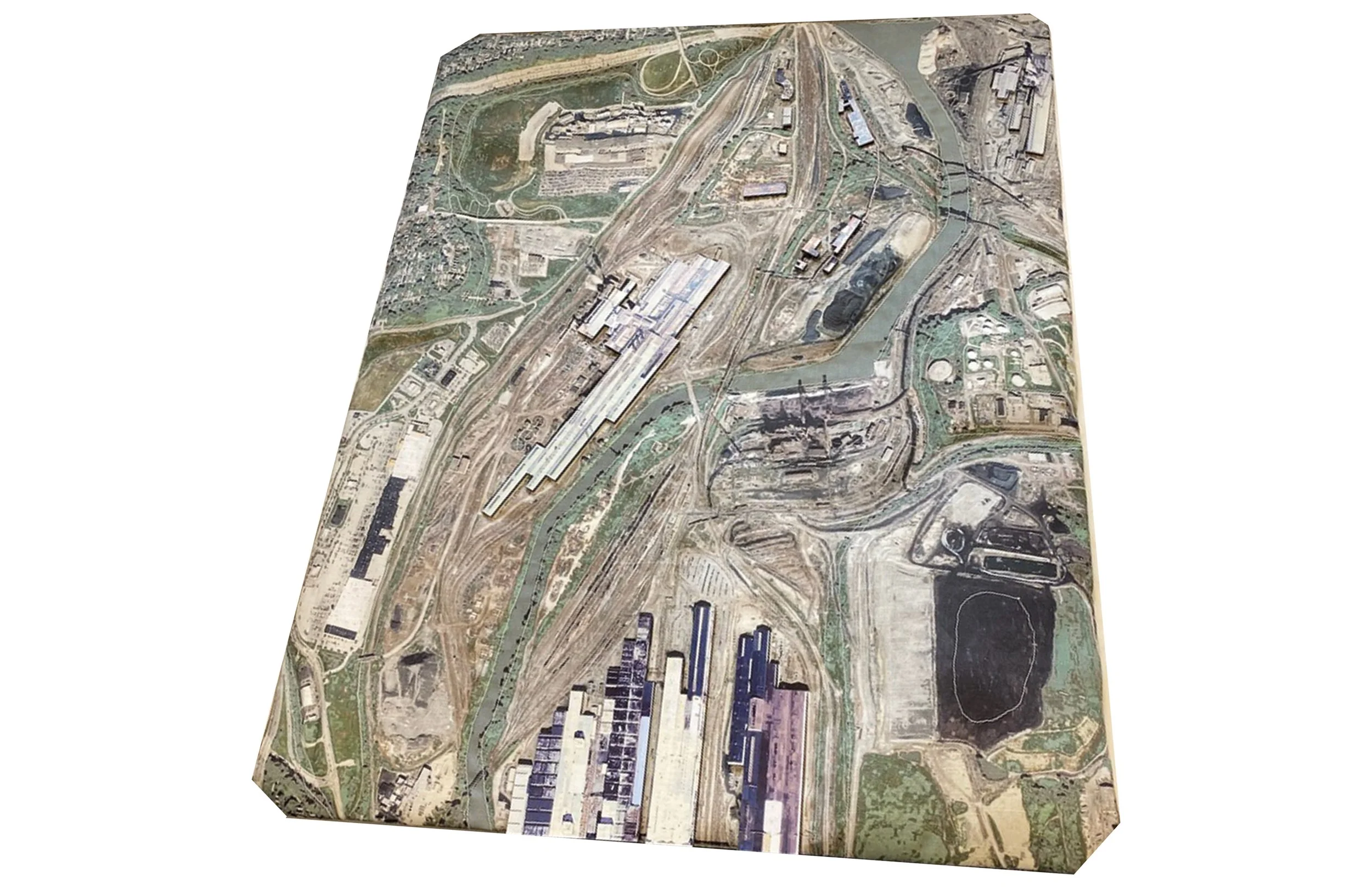
Cole Sukys and Jaret Lesure
INDEX Studio
Sewing Seed: Restitching Urban Fabric through Communal Agroforestry
Sewing Seed proposes a decentralized approach to agroforestry at scales ranging from a single planter box on a window to a 60-acre industrial void, creating spaces that cultivate community, knowledge, and resources holistically for the surrounding residents to thrive. This system creates solutions to issues including Urban Heat Island effect, water scarcity, food scarcity, and introduces a large quantity of renewable energy that can be distributed throughout the city. Incentives are provided and temporary programming is implemented on larger sites to engage the community and keep them actively interested and participating in the system, thus creating a network of food forests throughout the district for citizens to enjoy.
